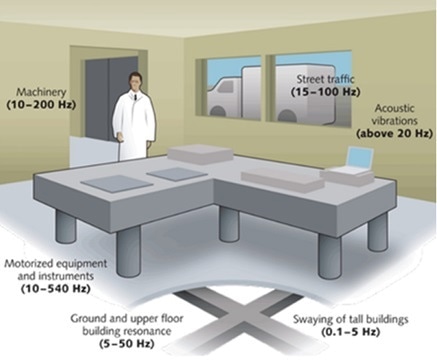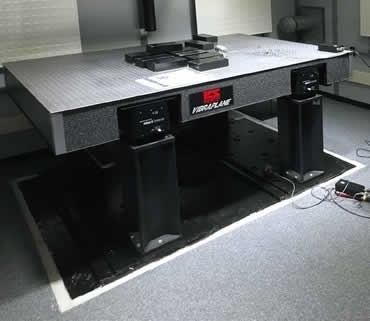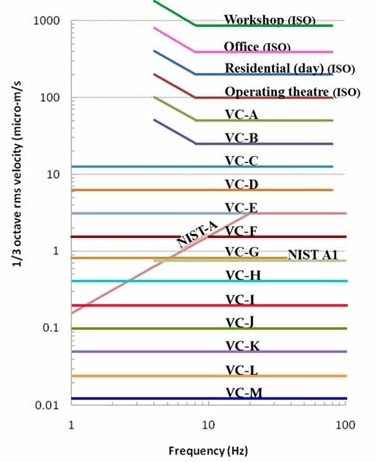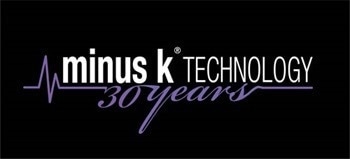Eric Ungar and Colin Gordon created the Vibration Criteria (VC) curves in the early 1980s. Originally, they were created as generic vibration criteria for vibration-sensitive equipment used in the medical, biopharmaceutical, and semiconductor industries. However, they have also been used in a wide range of technological applications.
The criteria are in the form of a set of one-third octave band velocity spectra, in combination with the International Organization for Standardization (ISO) guidelines for the impacts of vibration on people living in buildings. The criteria are applicable to vibration as quantified in the two horizontal directions and the vertical direction.

Figure 1. Vibration site surveys can tell you a lot about how to specify equipment for vibration isolation in your laboratory. Image Credit: Minus K Technology.
Vibration Criteria Curves
Currently, the VC curves are widely recognized across the globe as a basic principle for designing a facility to fulfill the demands of a group of highly vibration sensitive equipment used close to one another.
The Ultra-Low Vibration Lab (ULVL) at the University of Michigan was completed in 2014. Once it was constructed, a vibration survey was conducted on the chambers of the ULVL. The measurements showed that even if a single vehicle passed on an adjacent street, the vibrations surpassed the NIST-A specifications crucial for the ULVL.
Although the NIST-A criterion was created for metrology, it has become popular within the nanotechnology community. At certain sites that have substantial low-frequency vibrations, it is highly challenging to meet the NIST-A criterion.
The University of Michigan placed orders for seven tailor-made tabletops and 31 custom Minus K Negative-Stiffness vibration isolators (see Figure 2) equipped with pedestals for the eight ULVL chambers.

Figure 2. Customized Minus K Technology Negative-Stiffness vibration isolation table installed in one of the Ultra-Low Vibration Lab chambers. Image Credit: Minus K Technology.
After installing the custom modified Minus K Negative-Stiffness isolators and tables, Colin Gordon Associates (CGA) conducted the final vibration survey. The survey revealed that the vibration levels measured in all the ULVL chambers from VC-K to VC-M were at frequencies above 2.5 Hz, which is well below the mandatory NIST-A Vibration Criterion.
VC-M is the lowest we have ever measured, though we weren’t able to measure below 2.5 Hz because our most sensitive sensor won’t go lower, due to sensor noise floor.
Hal Amick, Vice President, Colin Gordon Associates

Figure 3. Image Credit: Minus K Technology
Figure 3 depicts the updated VC Curve, illustrating the lower curve levels measured by CGA, which have already helped the ULVL at the University of Michigan to achieve two significant scientific milestones.
The criteria chart including the vibration criteria in the form of one-third octave band velocity spectra, together with the International Organization for Standardization (ISO) guidelines for the impacts of vibration on people in buildings, is available on the Minus K website.

This information has been sourced, reviewed and adapted from materials provided by Minus K Technology.
For more information on this source, please visit Minus K Technology.